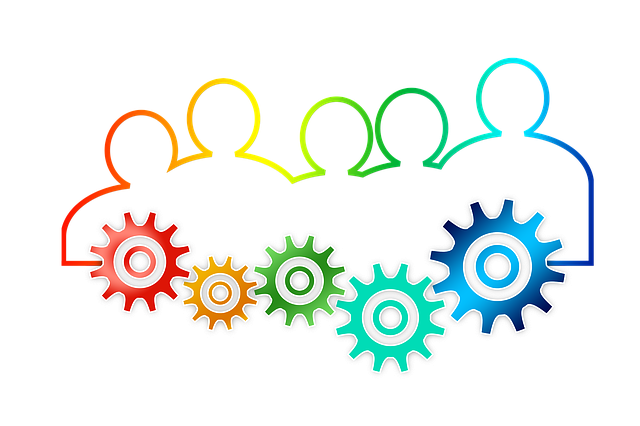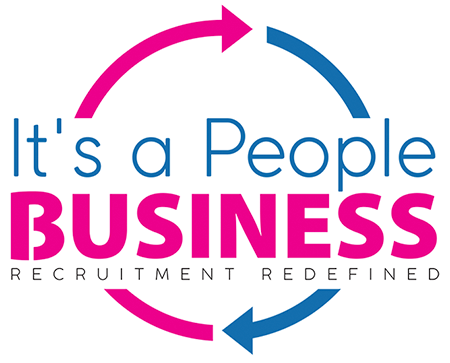Best Practices for Businesses

Collaboration is the cornerstone of any successful business. Building a collaborative workforce can lead to increased productivity, innovation, and job satisfaction. However, creating a culture of collaboration may not be easy, especially in businesses where the focus has traditionally been on individual success. In today's rapidly evolving work environment, it is essential for organizations to prioritize collaboration to stay competitive.
Collaboration is not just about working together; it is about bringing diverse perspectives, skills, and expertise to solve complex problems and achieve common goals. It requires openness to new ideas, effective communication, and trust among team members. Investing in training programs and technology tools that facilitate collaboration can go a long way in creating a collaborative work environment.When employees work together, they become more productive
When employees work together, they become more productive
Building a collaborative workforce takes time and effort, but the benefits far outweigh the costs. It fosters a sense of community among team members and encourages them to work towards shared goals. Collaboration enhances creativity and innovation by enabling employees to bring their unique skills and viewpoints to the table. It also improves communication as it encourages open dialogue and reduces the likelihood of misunderstandings. Furthermore, when employees work together, they become more productive, as they have the skills and resources of their peers to draw on. Finally, a collaborative workforce increases motivation and morale as employees feel valued and appreciated. In the end, building a collaborative workforce is an investment that pays dividends for the company and its employees.
Read More: Mastering Talent Acquisition: Strategies and Best Practices for Recruiting Top Candidates
1. Establish clear communication channels
1. Establish clear communication channels

One of the key components of encouraging teamwork and collaboration in any organization is to establish clear communication channels. Clear communication channels negate any ambiguity, which prevents misunderstandings, confusion, and mistakes. Moreover, communication channels should be well-defined, and there should be no ambiguity about the medium to be used for any specific communication if an organization aims to build a collaborative workforce.
Clear communication is of utmost Importance.
The right communication channels minimize delays in information transfer, ensure that communication is timely, and make it easy for employees to get in touch with one another, regardless of their location within the organization. Establishing clear communication channels promotes transparency and accountability, both of which are incredibly important when trying to achieve the objective of building a collaborative workforce.
2. Encourage open dialogues and feedback
2. Encourage open dialogues and feedback

One of the most effective ways to encourage teamwork and collaboration within a workforce is by fostering an environment of open dialogues and feedback. This means creating a space where team members feel comfortable sharing ideas, asking questions, and giving honest feedback without fear of judgment or reprisal. Encouraging regular team meetings where everyone has a chance to speak and share their thoughts can help facilitate this open dialogue. Additionally, providing opportunities for both positive and constructive feedback can help team members feel valued and understand how they can improve.
Employees should not fear talking to their seniors.
Employees should not fear talking to their seniors.
Encouraging a culture of open communication can also improve problem-solving within teams, as members are more likely to collaborate and work together to find solutions rather than seeking individual success. Overall, building a collaborative workforce relies on creating a culture of open communication and feedback to encourage effective teamwork and collaboration.
3. Promote a culture of trust
3. Promote a culture of trust

Encouraging teamwork and collaboration in the workplace is paramount to building a collaborative workforce. One of the essential components of fostering a collaborative team environment is promoting a culture of trust. A culture of trust is built on transparency and communication between colleagues. When team members trust each other, they are more likely to exchange ideas, give feedback, and work together to achieve common goals.
Transparency is key to create trust.
Transparency is key to create trust.
Read More: The Future of Work: Predictions for Online Recruitment in the Next Decade
4. Foster an environment of respect and collaboration
4. Foster an environment of respect and collaboration
Encouraging teamwork and collaboration in the workplace is essential for building a productive, thriving workforce. One key element of that is fostering an environment of respect and collaboration. When employees feel valued and heard, they are more likely to contribute to the team's overall success. Leaders can establish and maintain this environment by actively listening to employees and promoting open communication channels.
Lead by example.
Lead by example.
Encouraging frequent feedback sessions and having open-door policies can also help foster an environment of respect. In addition, leaders can model respectful behavior themselves, such as actively participating in team discussions and collaboration efforts. By prioritizing respect and collaboration in the workplace, businesses can create a more engaged, motivated, and productive workforce.
Read More: Mastering the Main Stages of Any Recruitment Discussion: A Practical Guide for Employers
5. Celebrate successes and reward progress
5. Celebrate successes and reward progress

Encouraging teamwork and collaboration within a workplace is essential for building a successful and productive team. One effective method to foster collaboration is to celebrate successes and reward progress. When team members achieve a goal or complete a project, it is important to acknowledge and recognize their hard work and contributions. This recognition can be in the form of a team lunch, a shout-out at a team meeting, or an email of recognition to the team and higher-ups. Such celebrations not only motivate team members to work harder and achieve goals, but also help create a sense of community and camaraderie within the team.
Rewards can be the best forms of motivation.
Rewards can be the best forms of motivation.
Rewarding progress, even if it is a small achievement, helps to build momentum and encourages team members to continue to strive towards success. Providing incentives like bonuses, extra time off, or gift cards can motivate team members to continue working collaboratively and successfully towards shared goals. Celebrating successes and rewarding progress are effective methods to encourage teamwork and collaboration within a workplace.
Read More: The Benefits of Working with a Flat Fee Recruiter
In conclusion
Building a collaborative workforce is crucial for the success of any organization. Through effective communication, clear goals, shared values, and a focus on teamwork, companies can create a culture of collaboration that empowers employees to work together towards common goals, share their knowledge and insights, and ultimately drive innovation and growth. By investing in collaborative practices and tools, organizations can foster a workplace that is more productive, efficient, and engaged, and better equipped to meet the challenges of today's ever-changing business landscape.
Reach out to It's a People.Business for expert guidance and support in implementing these best practices. Our team of recruitment professionals can help you develop a cost-effective and efficient hiring strategy that aligns with your business goals. Contact us today to learn more and take the first step towards building a strong and talented team for your small business.
